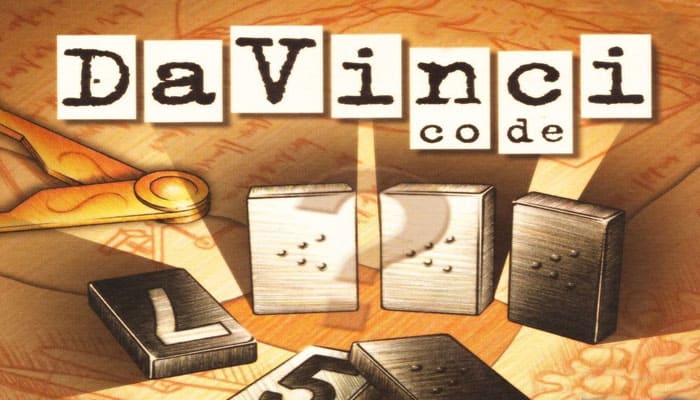

Components
- 13 White tiles
- 13 Black tiles
- Instructions
Object of the Game
Crack your opponent's secret code before they crack yours!
Setup
After removing the two 'Scramble Tiles', place the remaining twenty-four tiles face down in the center of the table and mix them thoroughly.
Each player takes four tiles (three tiles each if four people are playing) at random, and stands them up in a wall, with the blank side facing the opponents. The remaining tiles stay in the center. You may choose any combination of black and white tiles but accidental exposure spoils the game, so make sure you pick up your tiles carefully.
Place your tiles in numerical order, with the lowest number on your left and the highest on your right. For example, if you draw W4, B7, W10 and B1, then arrage them B1, W4, B7, W10.

If you draw two tiles with the same number, always place the dark tile to your left. For example, B5 then W5, or BB then W8.

Standard Play
The youngest player begins the game by drawing any one of the tiles from the center. This becomes your 'Clue Tile' Stand it to one side so only you can see the number. Do not add it to your line yet.

You must now point to a tile in an opponent's sequence and state aloud the hidden number you think it might be. You may choose any one of your opponents.
If your deduction is correct, the opponent must reveal his tile, by tipping it forward, so that everyone an see its identity - this tile remains exposed for the rest of the game.
You may now attempt to identify another tile. You may target the same opponent or any other player.
If your deduction is incorrect, you must reveal your 'Clue Tile' by placing it in your sequence, for all players to see. This will obviously help your opponents in cracking your code.

If your deduction is correct and you decide to end your tum, insert the clue tile into your code without showing it to your opponents. Your secret code is now longer by one number.

You may continue your turn as long as your deductions are correct, but each attempt carries a risk.
End of the Game
After your turn ends, either with a corrrect or incorrect deduction, play passes to the left. Continue to play until only one player has unexposed tiles. This last surviving player wins the game!
Any player whose code has been exposed is out of the game and can neither take a 'Clue Tile* nor attempt to reveal an opponent's tiles.

Advanced Play
Add the 'Scramble Tiles' into the center pile before play begins. If drawn, you can insert a 'Scramble Tile' anywhere within you code.
Having a 'Scramble Tile' complicates your opponent's task as identifying it is considerably more difficult than discovering any given number.

Convention
If 'Clue Tiles' run out, the game continues with players taking turns to state their deductions and reveal tiles until a winner emerges,
A 'Scramble Tile' can be placed anywhere in your sequence, this includes to the left of a zero, or the right of an eleven.
You may not write down your guesses, you must remember them as the game develops.
Official International Tournament Rules
Game play is the same as described above but scoring is added in tournament play. Scoring is as follows:
- One point for each correct guess.
- Three points for completely exposing an opponent's code.
- Five points for winning the round.
- As a bonus score, winner of the round gets the sum total of the unexposed tiles remaining. Please note; the dash is worth Zero.
- Winner of the game is the player with the most points after three rounds.
Continue Reading


